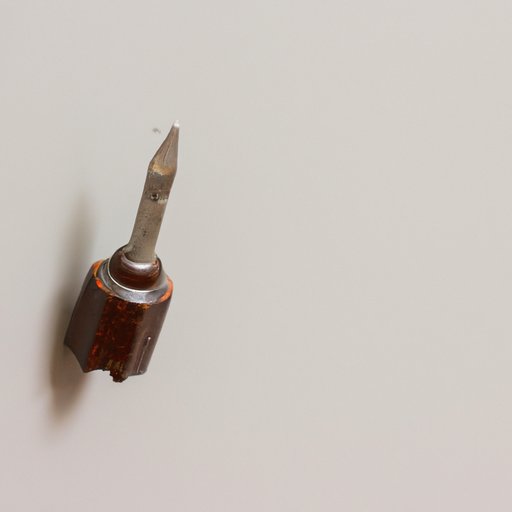
Introduction
Finding studs in a wall is an essential skill for any homeowner or DIY enthusiast. But what if you don’t have a stud finder to help you locate them? It can be frustrating, but fear not! In this article, we’ll explore several different methods for finding studs without a stud finder, so you can get back to hanging shelves, cabinets, and artwork with confidence.
Using a flashlight or phone camera to find nail pops or screws in the wall
One common method for finding studs without a stud finder is using a flashlight or your phone’s camera to look for nail pops or screws in the wall.
- Shine a flashlight across the wall or take a photo with your phone’s camera flash turned on.
- Look closely at the wall for any nail pops or screw heads that are visible.
- Once you locate a nail pop or screw head, examine the surrounding area to see if there are more in a straight line. This line will likely indicate the location of a stud.
Be sure to make a note of the stud location by marking it with a piece of tape or chalk.
Knocking on the wall
Another method for finding studs requires nothing more than your ears and a willing wall.
- Start at one end of the wall and knock lightly on the surface with your knuckles.
- Listen for a change in tone or density. A stud will produce a more solid, dull thud compared to the hollow sound of the space between studs.
- Move along the wall, knocking every few inches until you have identified the entire stud.
This method may require some practice to distinguish between a hollow and solid sound, but it’s a reliable way to find studs.

Running a strong magnet along the wall
Studs are often wooden or contain metallic nails, screws, or brackets. Using a strong magnet to locate these materials is another way to identify studs.
- Choose a strong magnet that will hold its weight against the wall.
- Slowly run the magnet across the wall until it sticks to a spot. The magnet may move slightly when it finds a metal fastener.
- Mark the area with tape or chalk.
This method is reliable but may not work as well if the wall is made of metal or the nails/screws used are non-magnetic.
Using tape or chalk to mark consistent spacing
Studs are typically spaced 16 inches apart on center, so you can use consistent spacing to help identify the location of studs on the wall.
- Find a nearby door or window frame and measure 16 inches on center from it.
- Place a piece of tape or mark the wall with chalk.
- Repeat this every few feet, using consistent spacing until you have covered the entire length of the wall.
- Look for the marks that fall at the same height on the wall. This is likely where the studs are located.
Be sure to check your measurements to ensure accurate spacing before marking the wall.
Looking for electrical outlets or switches
Electrical boxes are typically mounted to studs, so you can use them to help identify the location of these hidden pieces of wood.
- First, turn off the power to the electrical outlet or switch.
- Remove the cover plate and pull the outlet or switch out carefully.
- Look inside the electrical box to see which side the stud is located.
- Once you find the stud, measure out from either side of the box, 16 inches on center, to find the other studs.
Always be cautious when dealing with electricity, and if you’re unsure, seek professional assistance.
Measuring from the edge of a wall or doorway
You can also locate a stud by starting at a known point and measuring a set distance.
- Find the edge of the wall or doorway and measure over 16 inches on center.
- Place a piece of tape or mark the wall with chalk.
- Measure another 16 inches on center from the first mark and make another mark.
- Repeat this every few feet until you have covered the entire length of the wall.
- Look for the marks that fall at the same height on the wall. This is likely where the studs are located.
Always double-check your measurements to ensure accuracy.
Cutting away a small section of drywall
If all else fails, you can cut a small section of drywall away to expose the studs. This method requires more work and is generally only recommended if you plan to replace the removed section of drywall.
- Use a utility knife or drywall saw to make a 6×6-inch cut out of the drywall.
- Carefully remove the cutout, being careful not to damage the surrounding drywall.
- Look inside the hole to locate the studs.
- Replace the cutout and patch the drywall with spackle or joint compound. Sand and paint as needed.
Cutting a hole in drywall is a last resort and should only be done if other methods have failed.
Conclusion
Finding studs without a stud finder is entirely possible, as long as you use your intuition and some handy tools. Whether you choose to knock, measure, or cut away drywall, these methods will help you locate your studs in no time. With a bit of practice, you’ll be hanging shelves and pictures like a pro.





